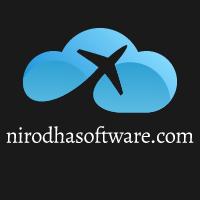A general overview of smart interfaces in aviation
Smart interfaces in aviation today play a crucial role, significantly increasing the level of comfort and efficiency of on-board services. Modern airlines are actively integrating various forms of intelligent technology into their services, which allows them to provide passengers with a higher-quality and personalized experience. These technologies include touch screens, interactive entertainment systems, as well as individual control panels for each passenger.
The use of smart interfaces allows business class passengers to control various aspects of their flight, from choosing the power supply to adjusting the lighting and temperature in the cabin. These systems also contribute to improving the efficiency of flight attendants, allowing them to respond more quickly to passenger requests and improving overall service.
The importance of automation in business class
Automation of on-board services in business Class plays a key role in improving the passenger experience by offering convenience, efficiency and personalization. For business class passengers who travel frequently for work and value their time and comfort, automation provides the opportunity to manage their on-board services with minimal effort and without unnecessary delays. One of the key aspects of automation is the ability of passengers to independently control various aspects of their flight, whether it’s menu selection, lighting and temperature settings, or access to entertainment systems.
This not only improves the overall comfort of the flight, but also allows passengers to customize the environment according to their individual preferences. Automation also reduces the burden on flight attendants, allowing them to focus on providing a more personalized and attentive service. This improves the overall flight experience and helps to increase customer satisfaction.
Technological foundations of smart interfaces
The technological foundations of smart interfaces include a number of advanced innovations that ensure their effectiveness and versatility. Basic technologies:
- Touch screens: They have become the basis of modern interfaces, offering an intuitive and easy-to-use way to interact with various devices and systems. In aviation, touchscreens are used for on-board entertainment systems, allowing passengers to control media content, lighting and temperature.
- Artificial Intelligence (AI) and Machine Learning: These technologies allow systems to adapt to user behavior and preferences, offering personalized recommendations and improving user interaction. In aviation, this may mean offering an individually tailored menu or entertainment options based on the passenger’s previous preferences.
The use of smart interfaces in on-board services
The use of smart interfaces in business class on-board services has significantly transformed the passenger experience. One striking example is the automated order menu, which allows passengers to select meals and drinks via touch screens or mobile devices. This not only simplifies the ordering process, but also allows you to personalize meals according to individual preferences or dietary restrictions.
Personalized entertainment systems have also noticeably improved the on-board experience. Passengers can choose from an extensive library of movies, music and games, and also have the ability to connect to high-speed Internet. Some systems even offer the ability to save preferences for future flights, which makes on-board entertainment even more personalized. These smart interfaces enhance not only convenience, but also service efficiency. Flight attendants receive accurate information about the preferences of passengers, which allows for faster and more accurate service.
Challenges and overcoming obstacles
The introduction of smart interfaces into the aviation industry is a difficult task, fraught with a number of challenges and obstacles. One of the main problems is ensuring data security. With the increase in the number of digital transactions, the risk of cyber attacks and data leaks increases, which requires the development and implementation of complex security systems. Another significant challenge is the integration of new technologies with existing on-board systems.
It is necessary to ensure the smooth operation of the new interfaces, taking into account the specifics and limitations of the current hardware and software. This requires careful planning and testing to ensure the stability and reliability of the system. Overcoming these obstacles is possible through strategic planning and implementation. It is important to conduct a comprehensive risk analysis and develop systems that take into account potential vulnerabilities.
The future of smart interfaces in aviation
The future of smart interfaces in aviation promises to be full of innovations and improvements, especially in the business class segment. It is expected that the development of technologies such as artificial intelligence, augmented reality and machine learning will significantly deepen the personalization of the passenger experience. Smart interfaces will further intuitively understand and anticipate the needs of passengers, offering a seamless and customized service.
In the future, we can expect these interfaces to be even more integrated with various aspects of flight, from on-board power to entertainment systems. For example, they can automatically adjust cabin lighting and temperature according to passengers’ preferences and sleep schedules. Also in the future is the development of more advanced virtual and augmented reality systems that will offer new ways of entertainment and work during the flight.
Questions and answers
Smart interfaces provide a higher level of comfort and efficiency, allowing passengers to control various aspects of their flight, such as power selection and lighting and temperature control. They also simplify the work of flight attendants, speeding up the service process and improving its quality.
Automation provides convenience, efficiency and personalization, which is especially appreciated by business class passengers. It allows them to easily manage on-board services without delay, customize their personal space and receive personalized service.
The main technologies include touchscreens, which facilitate interaction with on-board systems, as well as artificial intelligence and machine learning, which allow systems to adapt to user preferences and improve interaction.
Smart interfaces transform the passenger experience by providing automated order menus and personalized entertainment systems. They make the booking process more convenient and allow passengers to customize entertainment according to their preferences.
The main challenges include ensuring data security in the face of an increasing number of digital operations and integrating new technologies with existing on-board systems. These challenges require careful planning, comprehensive risk analysis, and the development of sophisticated security systems.

